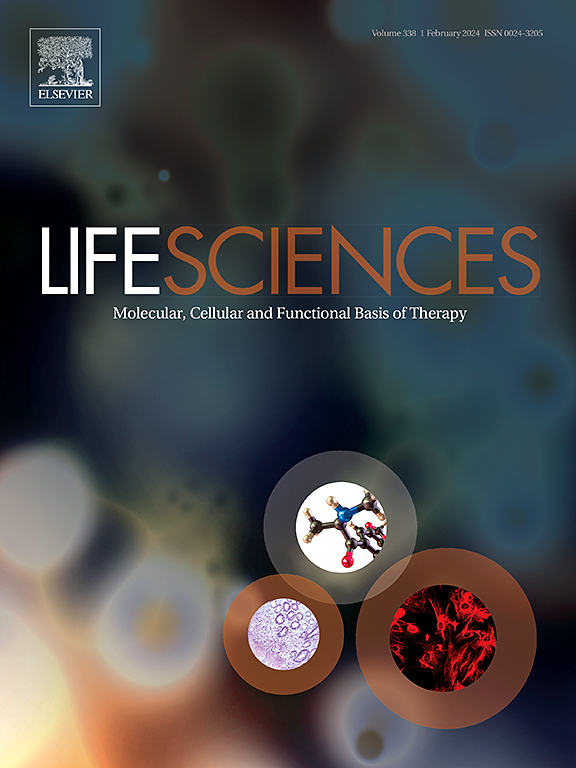针对胶质母细胞瘤中肿瘤相关巨噬细胞的新策略:趋化性阻断的重点
IF 5.1
2区 医学
Q1 MEDICINE, RESEARCH & EXPERIMENTAL
引用次数: 0
摘要
胶质母细胞瘤(GBM)仍然是最具侵袭性和治疗耐药性的脑肿瘤之一,患者预后较差。肿瘤相关巨噬细胞(TAM)是GBM肿瘤微环境中的一个关键角色,它促进肿瘤进展、免疫逃避和治疗抵抗。tam在肿瘤部位的募集是由特定的趋化信号驱动的,包括CSF-1/CSF-1R、CXCR4/CXCL12和HGF/MET途径。这篇综述探讨了目前对这些趋化机制及其在GBM进展中的作用的理解。它强调了靶向TAM趋化途径的潜在治疗益处,以破坏TAM浸润,减少免疫抑制,并提高常规治疗的疗效。此外,我们讨论了围绕关键抑制剂的临床前和临床证据,如PLX3397, AMD3100和克里唑替尼,这些抑制剂在重编程TAMs和改善GBM治疗结果方面显示出希望。虽然这些策略为克服GBM治疗的一些挑战提供了希望,但综述也指出了临床转化中的局限性和障碍,强调需要进一步研究和开发联合疗法以实现持续的治疗效果。本文章由计算机程序翻译,如有差异,请以英文原文为准。

Emerging strategies for targeting tumor-associated macrophages in glioblastoma: A focus on chemotaxis blockade
Glioblastoma (GBM) remains one of the most aggressive and treatment-resistant brain tumors, with poor prognosis for affected patients. A key player in the GBM tumor microenvironment is the tumor-associated macrophage (TAM), which promotes tumor progression, immune evasion, and therapeutic resistance. The recruitment of TAMs to the tumor site is driven by specific chemotactic signals, including CSF-1/CSF-1R, CXCR4/CXCL12, and HGF/MET pathways. This review explores the current understanding of these chemotaxis mechanisms and their role in GBM progression. It highlights the potential therapeutic benefits of targeting TAM chemotaxis pathways to disrupt TAM infiltration, reduce immunosuppression, and enhance the efficacy of conventional treatments. Additionally, we discuss the preclinical and clinical evidence surrounding key inhibitors, such as PLX3397, AMD3100, and Crizotinib, which have shown promise in reprogramming TAMs and improving treatment outcomes in GBM. While these strategies offer hope for overcoming some of the challenges of GBM therapy, the review also addresses the limitations and obstacles in clinical translation, emphasizing the need for further research and the development of combination therapies to achieve sustained therapeutic benefit.
求助全文
通过发布文献求助,成功后即可免费获取论文全文。
去求助
来源期刊

Life sciences
医学-药学
CiteScore
12.20
自引率
1.60%
发文量
841
审稿时长
6 months
期刊介绍:
Life Sciences is an international journal publishing articles that emphasize the molecular, cellular, and functional basis of therapy. The journal emphasizes the understanding of mechanism that is relevant to all aspects of human disease and translation to patients. All articles are rigorously reviewed.
The Journal favors publication of full-length papers where modern scientific technologies are used to explain molecular, cellular and physiological mechanisms. Articles that merely report observations are rarely accepted. Recommendations from the Declaration of Helsinki or NIH guidelines for care and use of laboratory animals must be adhered to. Articles should be written at a level accessible to readers who are non-specialists in the topic of the article themselves, but who are interested in the research. The Journal welcomes reviews on topics of wide interest to investigators in the life sciences. We particularly encourage submission of brief, focused reviews containing high-quality artwork and require the use of mechanistic summary diagrams.
 求助内容:
求助内容: 应助结果提醒方式:
应助结果提醒方式:


